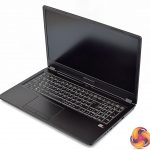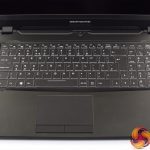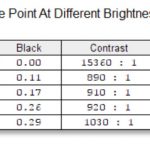
Many of our readers will be familiar with Dream Machines' gaming mice, but the Polish company also produces a range of laptops. These are now being sold in the UK by Fierce PC, and today we are reviewing the Dream Machines P960RN gaming laptop. It may not be an especially memorable name, but with an i7-9750H and RTX 2080 Max-Q, for price that is just north of £2000, could this be the your next laptop purchase?
- Display: 16.1″ Matte Full HD 144Hz IPS Screen
- CPU: Intel Core i7 9750H 2.6GHz Quad-Core CPU
- GPU: NVIDIA GeForce RTX 2080 8GB with Max-Q Design
- Memory: 16GB of 2666MHz DDR4 Memory
- Storage: 500GB M.2 Solid State Drive (Samsung 970 Evo Plus)
- Keyboard: Fully RGB-backlit Keyboard
- 1 x USB 3.1 Gen 2 port (Type-C)
- 1 x USB 3.1 Gen 1 port (Type-C)
- 2 x USB 3.0 port (Type-A)
- 1x SD/MMC reader
- 1 x Mini DisplayPort 1.3
- 1 x HDMI output port (with HDCP)
- 1 x 2-in-1 Audio Jack (Microphone / S/PDIF optical),
- 1 x 2-in-1 Audio Jack (Headphone / Microphone)
- 1 x RJ-45 LAN port
- 1 x DC-in jack
- Battery: 4-cell, 62WH. 180W Power brick
- Dimension: 380(W) x 252(D) x 19.9(H) mm
- Weight: 2.09 Kg, including 62WH Battery
While we will get to the headline components, and full testing, later in this review, it is also worth pointing out that the P960RN is also quite compact considering the hardware it has inside. Weighing in at 2.09kg, with a chassis that's under 2cm thick (not including the feet on the underside) you will have no problems carrying this around in a backpack to work or university.
On top of that, with a metal lid, keyboard deck and underside, the P960RN looks and feels high quality. Admittedly it isn't quite as premium as a Razer Blade or MacBook Pro with their unibody aluminium chassis, but you're also paying a lot less for the Dream Machines. In any case, there's very little flex to the inside of the laptop, and no more screen wobble than is standard for a portable machine.
As for the keyboard, this is a full-size unit with numpad, and it is generally decent as far as laptop keyboards go. It doesn't use low-profile mechanical switches like we have seen from some other machines in the past, but there is still a good amount of travel and the actuation doesn't feel mushy or spongy, so I can't really complain. The keyboard's RGB lighting isn't particularly sophisticated though, with just a few effects to choose from, but I can't imagine this would be a big factor for many people considering this laptop.
Pretty much the same sort of thing can be said for the trackpad. Immediately I thought the trackpad itself could be larger as there's definitely space around it to make it a bit wider and slightly taller, but using it day to day caused me no issues and it's actually very responsive in use. The discrete buttons are a little on the spongy side, but they're not bad at all and I'd say if you had to use the trackpad in a cafe or library then it would do the job fine. For any proper gaming, I am sure everyone would just use a mouse.
Connectivity options are also generous for a laptop this slim. The left hand side is home to three USB ports, two of which are USB 3.1 Gen1 – 1x Type-A and 1x Type-C – while the other is a USB 3.1 Gen2 Type-C port. Alongside these sit a mini-DisplayPort and full-size HDMI outputs. On the right hand side, there's another USB 3.1 Gen1 Type-A, dual audio jacks, SD card reader and Ethernet port.
Moving onto the display, this is another strong area for the P960RN. It's a 16.1in, 1920×1080 IPS panel with a 144Hz refresh rate. That means it's a very fluid gaming experience and the combination of resolution and refresh rate works perfectly with RTX 2080 Max-Q (but more on that later). Importantly, it's also a good quality panel with 98% sRGB coverage, and the peak brightness of just under 300 nits is respectable. I was also impressed to see an average delta E value of just 1.22, indicating high levels of colour accuracy.
Lastly, just to go over the core spec of the machine. The processor is Intel's 6-core i7-9750H, with a base and boost clock of 2.6GHz and 4.5GHz respectively. Alongside this sits 16GB of DDR4 2666MHz memory, while storage is provided by a single 500GB Samsung 970 Evo Plus NVMe SSD. Lastly, the GPU is Nvidia's RTX 2080 Max-Q, with a base clock of just 735MHz, and a rated boost clock of 1095MHz.
 KitGuru KitGuru.net – Tech News | Hardware News | Hardware Reviews | IOS | Mobile | Gaming | Graphics Cards
KitGuru KitGuru.net – Tech News | Hardware News | Hardware Reviews | IOS | Mobile | Gaming | Graphics Cards





















